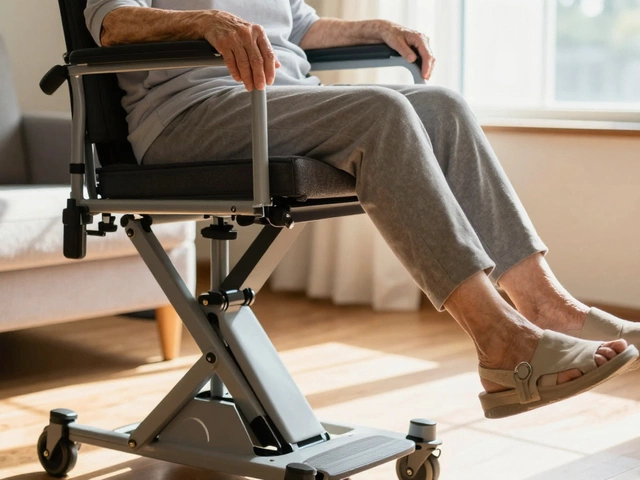Office Ergonomics Made Easy: Boost Comfort and Get More Done
Spending hours at a desk can turn your back into a sore mess if you don’t set up right. The good news? A few tweaks can make a big difference. Let’s walk through the basics of office ergonomics so you can work without the aches.
Chair Setup: The Foundation of a Pain‑Free Day
Start with your chair. Adjust the height so your feet sit flat on the floor and your knees form a 90‑degree angle. If you can’t reach the floor, use a footrest. The backrest should support the natural curve of your spine—most chairs have a lumbar pad you can slide up or down. Keep the armrests at a height where your shoulders relax and elbows stay close to a 90‑degree bend.
Desk, Monitor, and Keyboard Placement
Next, look at the desk. Your elbows should hover just above the tabletop when you type, keeping forearms parallel to the floor. Place the monitor an arm’s length away, with the top of the screen at or slightly below eye level. This prevents neck strain from constantly looking up or down. Use a separate keyboard and mouse if your laptop screen sits too high.
Don’t forget lighting. Position your screen to avoid glare from windows or overhead lights. A matte screen filter can help if you can’t control the light source.
Take micro‑breaks every 30‑45 minutes. Stand, stretch, or walk for a minute. Simple moves like shoulder rolls, wrist flexes, and neck tilts loosen up muscles before they lock in place.
If you can, try a sit‑stand desk. Even a few minutes of standing each hour reduces pressure on the lower back and boosts circulation. When you stand, keep the same ergonomic rules: monitor height unchanged, elbows at 90 degrees, and a supportive mat to ease foot fatigue.
Keyboard ergonomics matter too. Keep wrists straight and hands hovering lightly over the keys. A wrist rest can help, but only if it maintains a neutral wrist position.
Finally, personalize your space. Everyone’s body is different, so experiment with small adjustments. If a setting feels comfortable for a few minutes, chances are you’ve found a good spot.
Putting these changes into practice doesn’t require a big investment—just a few minutes of adjustment and the habit of regular movement. Over time, you’ll notice fewer aches, sharper focus, and a desk that feels like it’s working for you, not against you.
Are Ikea Office Chairs Safe? Real Talk on Comfort and Reliability
Wondering if Ikea office chairs are actually safe for daily work? This article breaks down what safety means when it comes to office chairs, digs into Ikea's safety records, customer feedback, and product testing, and looks at some real-world tips for safer, comfier seating. If you're thinking of buying, you'll get clear pointers about what to look out for and which features actually matter. Let’s settle whether an Ikea chair is really a good bet for your workspace.







